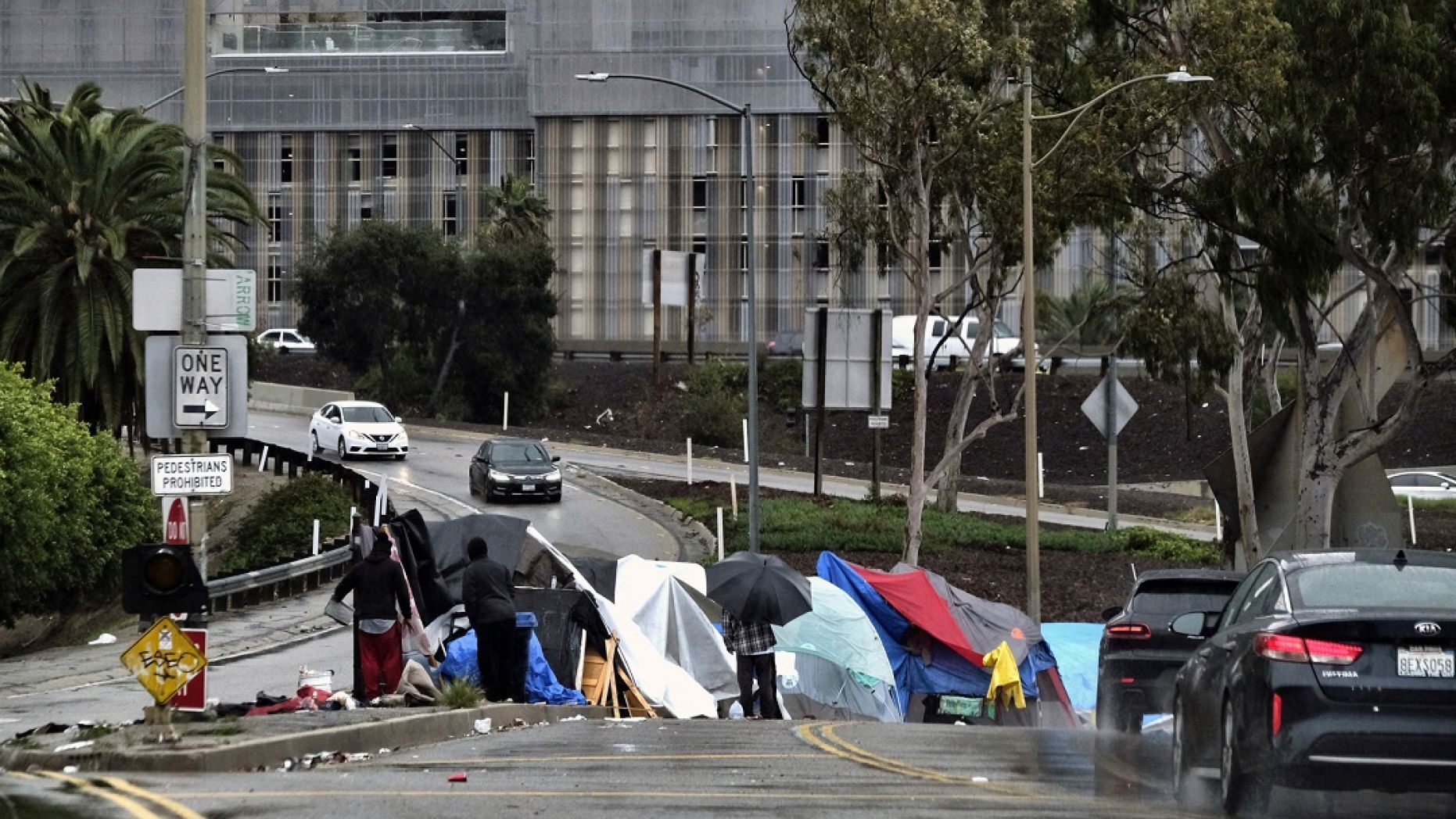
A homeless encampment in Downtown Los Angeles, California on January 14, 2019. State leaders are placing the blame on the homeless for the state's surging rat population, but it's not their fault. (Photo: AP)
Compared with other countries, the US has not acquired the same experience in handling major virus outbreaks. An epidemic like SARS, Ebola, or Zika has yet to test the country’s capabilities in safeguarding its residents from deadly diseases in emergency situations.
When an epidemic hits the US, those who live on the fringes of society are most affected. As the fifth reported case of novel coronavirus has emerged in the US, with two in southern California, residents are wondering if their state is prepared to for a widespread virus outbreak.
The Year of the Rat has officially begun, but in California, the Chinese zodiac is poised to take on a more figurative meaning. Last October in Los Angeles, city officials announced a flea borne typhus had hit the city’s homeless population. It’s ironic that a Medieval-era virus can thrive in one of the most advanced societies and also in the fifth-largest economy worldwide.
Rat City, California
In 2014, the California Department of Pesticide Regulation (DPR) banned consumer use and sales of second generation anticoagulant rodenticides (SGARS). The pesticide is considered “super-toxic” and a threat to wildlife. The chemical was used to control the rat population, ward off mosquitoes. Four years later, former California Governor Jerry Brown signed AB 2657, which banned the use of more rodenticides, and effectively reduced pest control capabilities curbing curb the state’s rat population.
In August, California Senate shot down AB 1788, which would have banned the use rodenticides entirely, but the battle will return this year and wildlife protectionists are convinced an outright ban is the best thing for the state.
Today, San Francisco, Los Angeles, San Diego, and the state capital Sacramento are grappling with a rodent population never before seen California history. In San Diego, city leaders had difficulty acknowledging it was problem even when pest control officials said business had increased some 75 percent compared to 2018.
According to an annual pest control survey from Orkin, a company that specializes pest and rodent extermination, found that Los Angeles has the second worst rat problem of any US city. San Diego was ranked 26, when the previous year it was listed at 47.
Too small to notice
Prior to the growth of the rat population, the state had grappled with a measles outbreak.
California Department of Public Health (CDPH) released a report that said two new mosquitoes aedes aegypti and aedes albopictus had been discovered. According to information posted on the CDPH website, the mosquitoes can transmit viruses like dengue, chikungunya, Zika, yellow fever, and typhus (a form of bubonic plague).
In 2014, the Democratic People’s Republic of Congo was hit with an Ebola virus outbreak. In the US, it wasn’t much of a challenge to prevent the virus from spreading. The DRC isn’t a popular travel destination among Americans. Since then, the US has handled 11 Ebola cases. It would be impossible to determine if the country’s virus prevention capabilities can handle a major outbreak as the system in place hasn’t been put to the test.
CDPH officials in November said California had reported 30 Zika virus cases in 2019. During a two-year period beginning in November 2014, almost 600 Zika cases had been reported. The problem is that the Zika virus never went away and medicine to treat it does not exist.
Other virus outbreaks that have affected a handful of California residents include influenza, which claimed 15 lives during the first two weeks of the new year. In 2016, the state’s homeless population fell prey to a Hepatitis outbreak that stretched for two years.
False remedies and scapegoats
California city officials are quick to blame the homeless population when a there’s a virus outbreak. Not only are their claims unfair, but they’re wholly inaccurate. Meanwhile, state Democrats continue to pass measures they feel are remedies but only create bigger problems in the years to follow.
Ignoring a potential epidemic is how a pandemic starts, but California doesn’t see it this way because it has yet to experience a widespread health crisis. The reality is that the state doesn’t know if it’s prepared. Hopefully, it won’t have to learn the hard way.


